DDC-8
|
Overview:
|
The eight-channel digital pulse
processor DDC-8 was originally intended to serve as a real-time trigger
for the PHOBOS experiment located in Brookhaven National Laboratory.
Besides this initial application, the device is targeted at flexible
general-purpose real-time digital pulse processing. The board features
eight analog input channels, as well as a large number of logic inputs
and outputs. The sixteen NIM inputs as well as seventeen TTL I/Os are
connected to the on-board FPGA in order to process coincidence signals
in real-time. The TTL lines can also serve as the high-speed,
bidirectional interface to the VME digital processor XLM-80. The USB
interface provides control of the device and medium-speed data readout,
while the RS-232 interface allows remote operation. The digital signal
processing is performed by the FPGA. The on-board microcontroller
performs the monitoring and communication chores. The photograph shows
the proctology board. The mechanical standard of the board is NIM. The
board can also be mounted in a CAMAC enclosure, or any other enclosure
from which it will receive +/-6V power.
|
---------------------------------------------------------------------------------------------------------------------------------------
|
The board:
|
|
|
|
Main parameters:
|
| FPGA |
Xilinx XC2S300E |
| Analog to Digital
Converter |
10bit@40MHz |
| Number of channels |
8 |
| Buffer
length per channel |
1024 samples |
|
Sample digitized pulse:
|
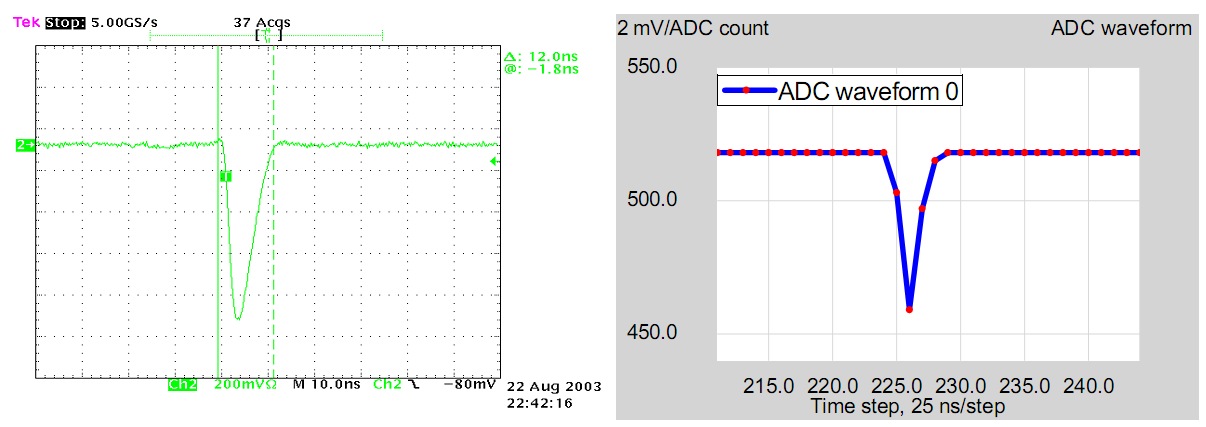
Left:
A fast test pulse from the NIM pulser, which is a good approximation of
a pulse from a fast phototube. The pulse lasts for only half of the
DDC-8 sampling period. Right :
the waveform captured with DDC-8. |
| --------------------------------------------------------------------------------------------------------------------------------------- |
Real application:
|
Online Muon Capture and Decay Experiment
|
Megan
Alexander, Daniel Miner,
Wojtek Skulski, Frank Wolfs
On-line Muon experiment is here
Presentation available here |
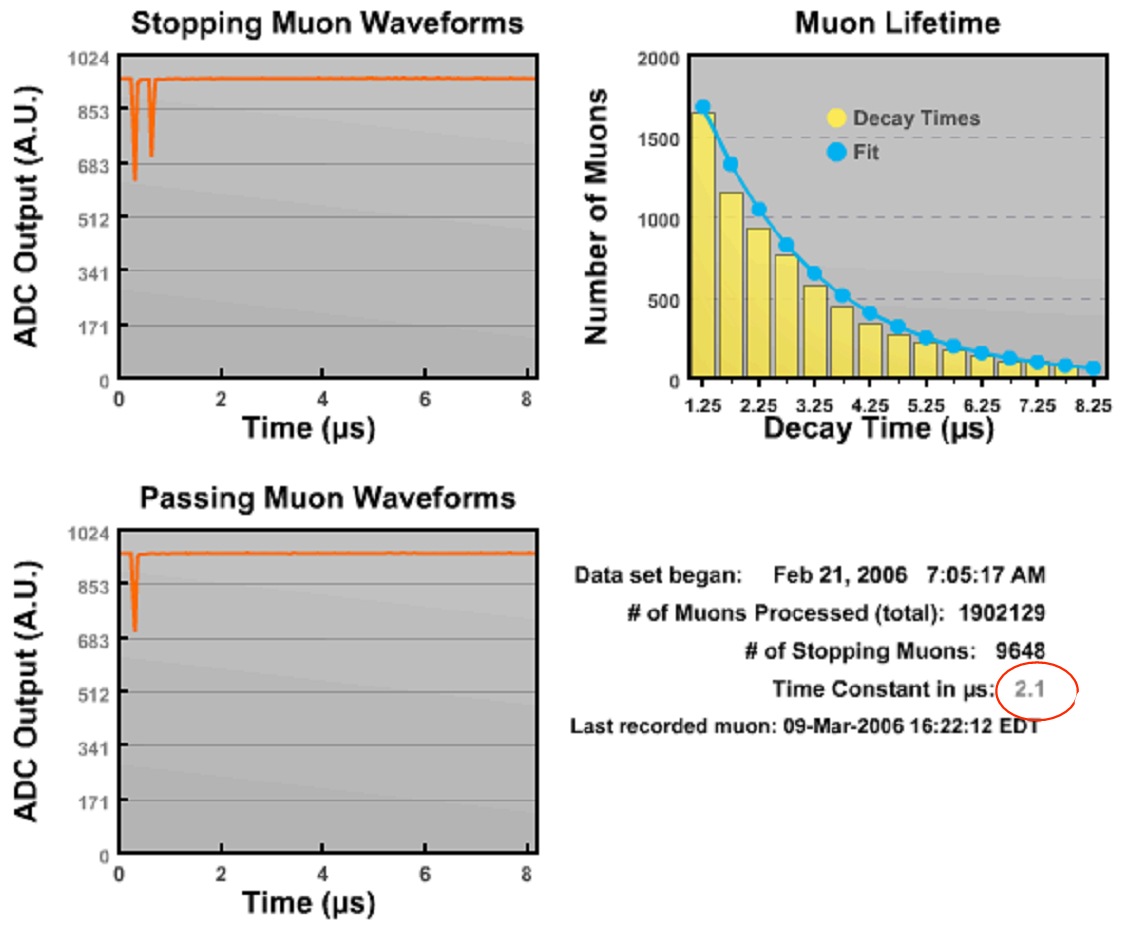
Sample screenshot of the on-line
muon experiment
|
|
Implementing in FPGA stopping Muon detection for the
Online Muon Experiment
|
DDC-8
firmware enhancement by Eryk Druszkiewicz as a summer Research
Experience for Undergraduates (REU)
The goal was to add the ability to distinguish stopping from
passing muons on-the-fly using the FPGA on DDC-8. This then gave the
ability to control the ratio of passing to stopping muons
captured. As one can see in the screenshot above the uncontrolled ratio
is about ~200. Since the new firmware we were able to effectively
decrease the ratio. For example in the experiment summarized in the
figure below, the ratio was set to 4.
|
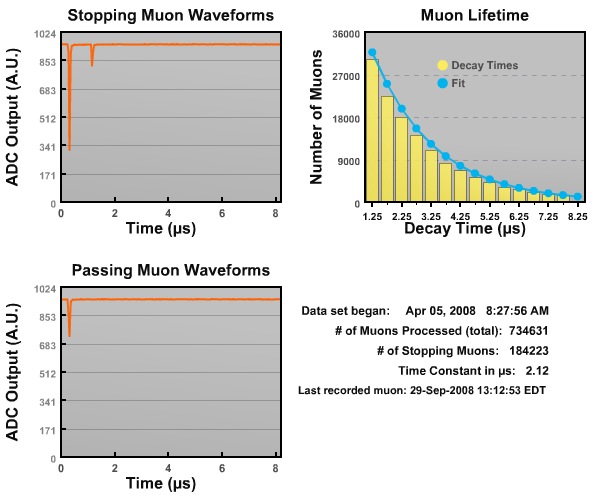
Sample screenshot of the on-line Muon Experiment with
on-the-fly muon detection
|
|
Energy spectra collection with the NaI(Tl) detector |
| Using
a DDC-8 board an energy threshold of as low as 5 keV was achieved with
the DDC-8 board during a measurement that extended into an MeV range. |
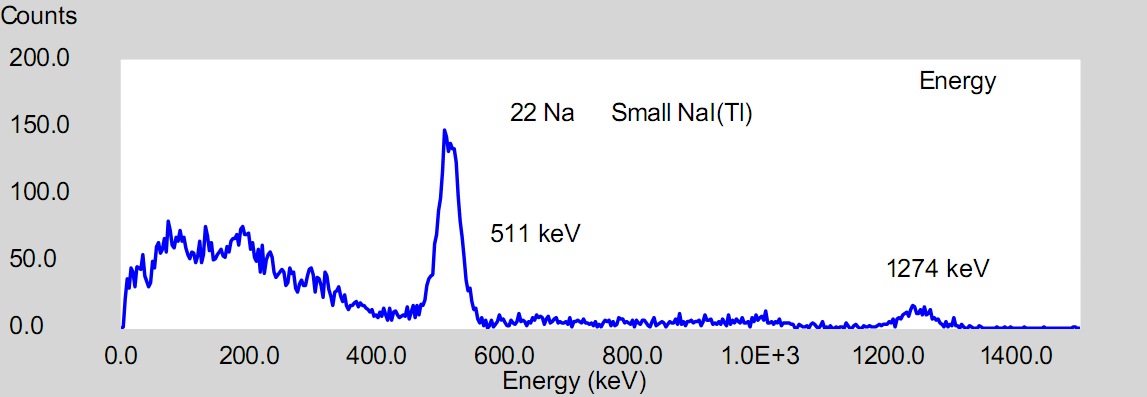
Sample 22 Na spectrum obtained with DDC-8

Sample Co60 spectrum obtained with DDC-8
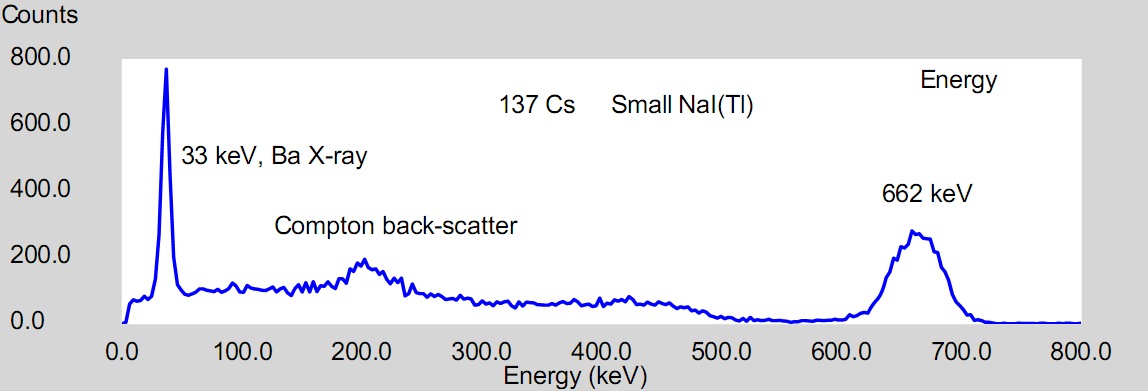
Sample Cs spectrum obtained with DDC-8 |
|






